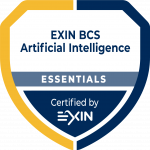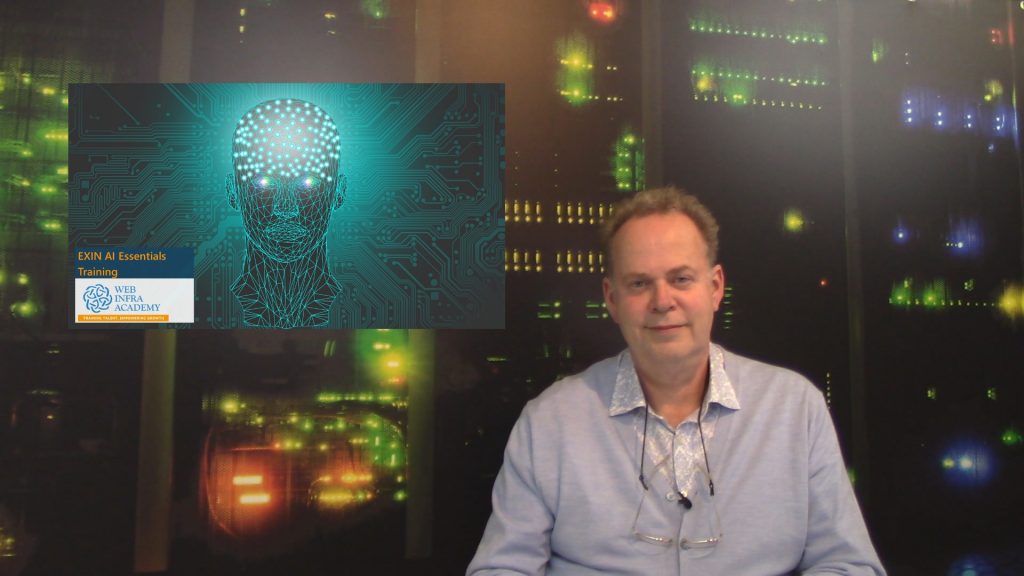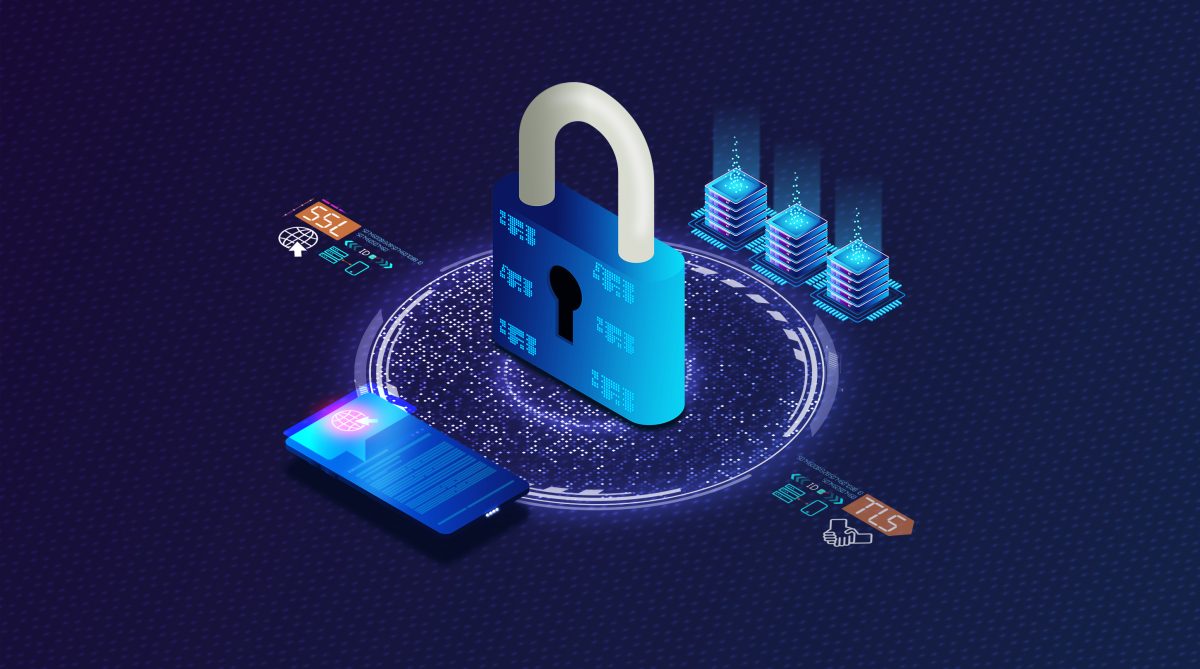Sorry, this entry is only available in Nederlands.
Author: Marcel Punselie
(Nederlands) IT Basiskennis & Software Design Training – Voor Beginners & Professionals
eLearning Digital Certificates SSL/TLS and PKI: A Complete Beginner-to-Advanced Training
Wil je begrijpen hoe HTTPS werkt, hoe encryptie toegepast wordt en hoe je certificaten beheert binnen een PKI?
In a world where cyber threats are increasing and digital communication is the norm, digital certificates and SSL/TLS security are essential for every organization. This in-depth training provides you with the knowledge and practical experience to understand, implement and manage secure digital communication.
Do you want to understand how HTTPS works, how encryption is applied and how to manage certificates within a PKI? Then this training is for you. You will gain in-depth knowledge about asymmetric encryption, certificate chains, mTLS, HSMs, certificate management and PKI policy.
Digital Certificates SSL/TLS and PKI: A Complete Beginner-to-Advanced Training can be found here on our eLearning platform:
Click here to go to our eLearning platform
What will you learn in this training?
✅ Understand the fundamentals of encryption and HTTPS
- What is HTTPS, SSL and TLS?
- How does encryption work with keys and algorithms?
- What is a cyphersuite and how is it chosen?
✅ Dive into the world of digital certificates and SSL/TLS
- How do Public and Private Keys work?
- What is the difference between symmetric and asymmetric encryption?
- How does a digital signature work and what is non-repudiation?
✅ Hands-on demo’s: SSL/TLS in action
- Certificate Inspection in the Browser
- Certificate and trust store verification
- Analysis of the SSL handshake and session keys

✅ Implementations of SSL/TLS and certificates
- Mutual TLS (mTLS)
- Use of certificates for internal and external networks
- Personal certificates
✅ Certificate management and Public Key Infrastructure (PKI)
- What is PKI and how does it work?
- Differences between DV, OV and EV certificates
- Self-signed certificates and PKI-as-a-Service
✅ Best practices and Challenges
- Certificate management automationr
- Risks of outdated encryption and quantum computing
- How to prevent errors in issuance, renewal and withdrawal?
Agenda / eLearning
You can watch the full agenda on YouTube. This training is available on our eLearning platform. The eLearning consists of 34 videos, not generated with AI. The agenda on YouTube is a great example:
Click here to go to the agenda on YouTube.
Digital Certificates SSL/TLS and PKI: A Complete Beginner-to-Advanced Training can be found here on our eLearning platform:
Click here to go to our eLearning platform
Who is this training for?
This training is ideal for:
- IT administrators and system administrators
- Solution Architects and Enterprise Architects
- Product Owners and managers
- Security officers and compliance specialists
- DevOps engineers and network administrators
- Anyone responsible for secure digital communication
What makes this training unique?
- practice-oriented
- Current topics such as Confidential Computing and Quantum-Resistant Encryption
- Interactive demos and real-life scenarios
- Directly applicable knowledge for your organization
Course duration Digital Certificates SSL/TLS and PKI: A Complete Beginner-to-Advanced Training
The classroom (and webinar) training can be delivered in 1 day.
Course Dates Webinar / Classroom Training
- 13th of June 2025
- 11th of Juli 2025
- 15th of August 2025
- 17th of October 2025
- 21st of November 2025
Contact us to sign up or get started right away and head over to our eLearning platform!
Digital Certificates SSL/TLS and PKI: A Complete Beginner-to-Advanced Training
Wil je begrijpen hoe HTTPS werkt, hoe encryptie toegepast wordt en hoe je certificaten beheert binnen een PKI?
In a world where cyber threats are increasing and digital communication is the norm, digital certificates and SSL/TLS security are essential for every organization. This in-depth training provides you with the knowledge and practical experience to understand, implement and manage secure digital communication.
Do you want to understand how HTTPS works, how encryption is applied and how to manage certificates within a PKI? Then this training is for you. You will gain in-depth knowledge about asymmetric encryption, certificate chains, mTLS, HSMs, certificate management and PKI policy.
What will you learn in this training?
✅ Understand the fundamentals of encryption and HTTPS
- What is HTTPS, SSL and TLS?
- How does encryption work with keys and algorithms?
- What is a cyphersuite and how is it chosen?
✅ Dive into the world of digital certificates and SSL/TLS
- How do Public and Private Keys work?
- What is the difference between symmetric and asymmetric encryption?
- How does a digital signature work and what is non-repudiation?
✅ Hands-on demo’s: SSL/TLS in action
- Certificate Inspection in the Browser
- Certificate and trust store verification
- Analysis of the SSL handshake and session keys

✅ Implementations of SSL/TLS and certificates
- Mutual TLS (mTLS)
- Use of certificates for internal and external networks
- Personal certificates
✅ Certificate management and Public Key Infrastructure (PKI)
- What is PKI and how does it work?
- Differences between DV, OV and EV certificates
- Self-signed certificates and PKI-as-a-Service
✅ Best practices and Challenges
- Certificate management automationr
- Risks of outdated encryption and quantum computing
- How to prevent errors in issuance, renewal and withdrawal?
Agenda / eLearning
You can watch the full agenda on YouTube. This training is available on our eLearning platform. The eLearning consists of 34 videos, not generated with AI. The agenda on YouTube is a great example:
Click here to go to the agenda on YouTube.
Digital Certificates SSL/TLS and PKI: A Complete Beginner-to-Advanced Training can be found here on our eLearning platform:
Click here to go to our eLearning platform
Who is this training for?
This training is ideal for:
- IT administrators and system administrators
- Solution Architects and Enterprise Architects
- Product Owners and managers
- Security officers and compliance specialists
- DevOps engineers and network administrators
- Anyone responsible for secure digital communication
What makes this training unique?
- practice-oriented
- Current topics such as Confidential Computing and Quantum-Resistant Encryption
- Interactive demos and real-life scenarios
- Directly applicable knowledge for your organization
Course duration Digital Certificates SSL/TLS and PKI: A Complete Beginner-to-Advanced Training
The classroom (and webinar) training can be delivered in 1 day.
Course Dates Webinar / Classroom Training
- 13th of June 2025
- 11th of Juli 2025
- 15th of August 2025
- 17th of October 2025
- 21st of November 2025
Contact us to sign up or get started right away and head over to our eLearning platform!
eLearning EXIN AI Essentials
Opportunities, challenges and risks: start now with Artificial Intelligence
The content of this eLearning EXIN AI Essentials is the same as the classroom training. Click here to go directly to our Learning Management System. Click here to check the agenda on YouTube.
This eLearning module consists of a series of movies (each approx. 10 minutes) and optional questions, hosted on our state of the art Learning Management System (LMS). You can study anywhere, anytime : we also offer an App for your mobile phone and tablet. You will receive a soft copy of the material (including links).
This EXIN AI Essentials training includes the Exin exam which, upon succesful completion, certifies you for the internationally recognized BCS AI Essentials Syllabus.

Artificial Intelligence (AI) is at the moment one of the most exciting and innovative developments. You are using AI daily, maybe without you knowing about it. AI and Machine Learning have the potential to improve our lives: do the dull and dangerous work for us, but it is also an improvement for healthcare (think of an App like SkinVision). AI is an disruptive innovation that can help in decision making, predicting the market or the behaviour of your customer. AI is already vital for Cybersecurity (anomaly detection).
However, AI can be a threat for privacy and employment, also think of lethal autonomous weapon systems like drones.
In this EXIN AI Essentials training you will learn how you to use AI and Machine Learning safely and responsibly. Are you prepared for the revolution in the relationship between human and machine? Why is now the time to start with AI and Machine Learning?
You will learn the basic techniques of Deep Learning (ANN, Artifical Neural Networks), chatbots (NLP, Natural Language processing) and techniques how to learn from data, discover patterns and make predictions using data (classification and regression). We will explain the basic principles of data (science). You will learn about the most popular (autoML) tools and algorithmes. How do you setup an AI project, what are the challenges, how can you mitigate the risks?
If you click on the picture below, you will see (on YouTube) a part from our eLearning with examples of AI and Machine Learning:

Feedback participants
You can find feedback and experiences of participants of our courses on Spingest.
Price
The Web Infra Academy uses two price models: per student or per training. For more information or a quotation please contact us or use the form at the end of this page.
- (virtual) Classroom: 649,00 Euro per student (ex. VAT, including access to our eLearning)
eLearning 395,00 Euro per student
Prerequisites
- None
Target audience
Everybody who wants to understand AI and wants to start with AI and Machine Learning.
Course Agenda eLearning EXIN AI Essentials
- What is AI and Machine Learning?
- Examples of AI and Machine Learning
- History of AI and Machine Learning
- Terminology AI and Machine Learning (Deep learning, General AI, Narrow AI, Singularity etc. etc.)
- Why to start now: the 7 “key enablers”
- Relationship Big Data, IoT and AI/Machine Learning
- Basics of Data Science
- The opportunities of AI and Machine Learning
- Basic techniques of Machine Learning (supervised, unsupervised, reinforcement learning etc.)
- Deep Learning, Artificial Neural Networks, classification, regression, Natural Language Processing (NLP)
- What are the most popular algorithmes and how can you evaluate and tune them?
- Which tools are available and what is autoML?
- Challenges, risks and ethics of AI and Machine Learning
- How can I implement Machine Learning (agile) in my organisation
- Resources for learning
If you have any questions or are interested in this course, please contact us or use the form below:
EXIN AI Essentials training
Opportunities, challenges and risks: start now with Artificial Intelligence
This EXIN AI Essentials training includes the Exin exam which, upon succesful completion, certifies you for the internationally recognized BCS AI Essentials Syllabus. This classroom (or virtual) training includes 60 days access to our eLearning module. Click here to check the agenda on YouTube.

Artificial Intelligence (AI) is at the moment one of the most exciting and innovative developments. You are using AI daily, maybe without you knowing about it. AI and Machine Learning have the potential to improve our lives: do the dull and dangerous work for us, but it is also an improvement for healthcare (think of an App like SkinVision). AI is an disruptive innovation that can help in decision making, predicting the market or the behaviour of your customer. AI is already vital for Cybersecurity (anomaly detection).
However, AI can be a threat for privacy and employment, also think of lethal autonomous weapon systems like drones.
In this EXIN AI Essentials training you will learn how you to use AI and Machine Learning safely and responsibly. Are you prepared for the revolution in the relationship between human and machine? Why is now the time to start with AI and Machine Learning?
You will learn the basic techniques of Deep Learning (ANN, Artifical Neural Networks), chatbots (NLP, Natural Language processing) and techniques how to learn from data, discover patterns and make predictions using data (classification and regression). We will explain the basic principles of data (science). You will learn about the most popular (autoML) tools and algorithmes. How do you setup an AI project, what are the challenges, how can you mitigate the risks?
If you click on the picture below, you will see (on YouTube) a part from our eLearning with examples of AI and Machine Learning:
Feedback participants
You can find feedback and experiences of participants of our courses on Spingest.
Course duration
This EXIN AI Essentials training is offered in one day.
Price
The Web Infra Academy uses two price models: per student or per training. For more information or a quotation please contact us or use the form at the end of this page.
- (virtual) Classroom: 649,00 Euro per student (ex. VAT, including access to our eLearning)
eLearning 395,00 Euro per student
Course dates classroom training
You can find the dates of this classroom training on the website of our international partner Skillsoft / Global Knowledge, click HERE.
Prerequisites
- None
Target audience
Everybody who wants to understand AI and wants to start with AI and Machine Learning.
Course Agenda EXIN AI Essentials
- What is AI and Machine Learning?
- Examples of AI and Machine Learning
- History of AI and Machine Learning
- Terminology AI and Machine Learning (Deep learning, General AI, Narrow AI, Singularity etc. etc.)
- Why to start now: the 7 “key enablers”
- Relationship Big Data, IoT and AI/Machine Learning
- Basics of Data Science
- The opportunities of AI and Machine Learning
- Basic techniques of Machine Learning (supervised, unsupervised, reinforcement learning etc.)
- Deep Learning, Artificial Neural Networks, classification, regression, Natural Language Processing (NLP)
- What are the most popular algorithmes and how can you evaluate and tune them?
- Which tools are available and what is autoML?
- Challenges, risks and ethics of AI and Machine Learning
- How can I implement Machine Learning (agile) in my organisation
- Resources for learning
If you have any questions or are interested in this course, please contact us or use the form below:
eLearning CASB, SD-WAN and SASE
The latest trends for (hybrid) Cloud security. Are you in control of the Cloud usage by your company?
As more data moves to the cloud, new tools and methods are needed to control your data and comply to security regulations. This eLearning CASB, SD-WAN and SASE is based on the latest security trends as defined by Gartner, Forrester and the Cloud Security Alliance (CSA).
You can find a detailed agenda at the end of this page or you can watch the short agenda on YouTube. This webinar is also part of our Masterclass Digital Transformation and is available through our partner Global Knowledge.
This eLearning module consists of a series of movies and optional questions, hosted on our state of the art Learning Management System (LMS). You can study anywhere, anytime : we also offer an App for your mobile phone and tablet. You will receive a soft copy of the material (including links).
Click here to go directly to our Learning Management System. Or watch a preview on YouTube here.
Are you in control of your business data in the Cloud (think of Dropbox, social media, Gmail or Office365)? Security in the Cloud is a shared responsibility which leads to complexity and confusion.
A CASB (Cloud Access Security Broker) is essential to mitigate and control the risks involved in the (unwanted) usage of the Cloud (Shadow IT for example)
“Email is the #1 attack vector. Cloud Account Takeover is the #1 attack target. A CASB is the best way to protect against these threats – Cloud Security Alliance (CSA).
Threats, hacks and zero days are unfortunately the order of the day. Even the most professional IT organizations are hit by malware, think of the recent Solarwinds hack. Are your data and applications safe in the hybrid Cloud?
In this CASB, SD-WAN and SASE Training you get an overview of the latest security and networking technologies and you will learn: What is it? Why do I need it? How can I implement it? What are the major vendors?
Digital business transformation requires anywhere, anytime access to applications and services — many of which are now located in the cloud (Source: Gartner, August 2019, The Future of Network Security Is in the Cloud)
The term SASE (Secure Access Server Edge) was introduced in 2019 by Gartner. SASE is a new category of cloud-native networking and security solutions. The used technologies are not new as such, but the convergence of these solutions in one product offering a single pane of glass and single point of control is.
Because SASE (but also CASB) is a combination of existing security and networking tools, in this training you will gain insight in the latest tools such as:
- Secur Web Gateway (SWG)
- Software defined wide area network (SD-WAN)
- Software-defined perimeter (SDP) or Zero Trust network access (ZTNA)
- Firewall as a service (FWaaS)
- Next-generation firewall (NGFW)
- Remote Browser Isolation (RBI)
- Next-generation antimalware (NGAM)
- Intrusion prevention system (IPS)

Course delivery
This training is also offered by our partner Global Knowledge.
This eLearning CASB, SD-WAN and SASE is available in the following formats:
- Webinar: Online classroom / virtual classroom: you are live connected to the trainer with Zoom (or Teams).
- Classroom training (postponed until further notice)
- eLearning, click here.
Price
The Web Infra Academy uses two price models: per student or per training. For an onsite classroom training and a quotation please contact us or use the form at the end of this page.
- Webinar : 695,00 (ex. VAT) Euro per participant (with Skype of Zoom)
- Classroom: 695,00 (ex. VAT) Euro per participant
- E-learning: 249,00 (ex. VAT) Euro per participant
Prerequisites
Basic IT knowledge.
Target Audience
Anyone who wants to know about the latest trends in Cloud security.
Course dates webinar/remote/online
- 08-03-2021 – Online, Zoom
- 09-07-2021 – Online, Zoom
Please register using the form at the end of this page.
Agenda eLearning CASB, SD-WAN and SASE
- What is a CASB?
- Why do you need a CASB? What does a CASB offer, what are the advantages?
- Architecture CASB, first-gen versus next-gen Multi-mode CASBs
- Agentless CASB: AJAX-VM
- The different implementations of CASB: log collection, packet capture, Cloud APIs, proxies and AJAX-VM
- Recommendations and vendors
- What is SD-WAN and Software Defined Networking
- Challenges with the current WAN technology
- Comparison MPLS and SD-WAN
- Advantages SD-WAN: transport agnostic, tunnel bonding, intelligent routing
- SD-WAN architecture and implementation
- Recommendations and vendors
- What is SASE
- Het problem with Service chaining
- Why SASE, what are the advantages
- Architecture and implementation: SASE Cloud and SASE Points of Presence (PoP)
- What are the essential components of Networking as a Service and Security as a service:
- Software defined wide area network, SD-WAN
- Software-defined perimeter (SDP) en Zero Trust network access (ZTNA)
- Secure web gateway (SWG) versus Firewall as a service (FWaaS) versus Nextgen firewall (NGFW) versus Web Application firewall (WAF)
- Next-generation antimalware (NGAM)
- Intrusion Detection Systems (IDS) versus Intrusion prevention system (IPS)
- Remote Browser Isolation (RBI)
- The role of Deep Packet Inspection (DPI)
- Recommendations and vendors
If you have any questions or are interested in this course, please contact us or use the form below:
eLearning IT Essentials (for non-IT professionals)
Van hardware, virtualisatie, cloud tot software, API’s etc.: begrijp je IT, inclusief cybersecurity
The content of this eLearning IT Essentials (for non-IT professionals) is the same as the classroom training. Click here to go directly to our Learning Management System. You can find a detailed agenda at the end of this page or you can watch the agenda on YouTube.
In this day and age we can’t live without IT. IT is essential for a modern business and IT is of great influence on our lives. This IT Essentials training will give you control in IT decisions being made in your business, for example when acquiring software. You will gain the knowledge to participate in IT discussions and challenge IT professionals in design choices being made. After attending this eLearning IT Essentials (for non-IT professionals) you will gain insight into your IT costs.
This is an eLearning module that consists of a series of movies and a series of optional questions, hosted on our state of the art Learning Management System (LMS). You can study anywhere, anytime : we also offer an App for your mobile phone and tablet. You will receive a soft copy of the material (including links).
This eLearning IT Essentials (for non-IT professionals) is meant for those working closely with IT (product owners, managers, etc.) needing more technical knowledge.
A shorter version of this training is also available, you can see an overview of the differences here.
Threats of virusses and ransomware are increasing day by day. How many phishing mails do you receive? You will learn the essentials of cybersecurity and which countermeasures are essential. How can you prevent loosing your valuable data?

IT professionals tend to speak their own language, which makes it very hard for outsiders to understand what they are talking about. This can be frustrating to say the least. In this eLearning IT Essentials (for non-IT professionals) you will learn the language and terminology used by IT professionals.
This eLearning IT Essentials (for non-IT professionals) explains the basics of Information Technology: from raw data to information. Latest trends in IT like the Cloud, Big Data and IoT (Internet of Things) are explained.
You can find a detailed agenda of this training at the end of this page.
This training is an excellent preparation for our Masterclass Digital Transformation about the latest trends in IT (Hybrid Cloud, AI & ML, Zero Trust etc.).
During the training you will receive a soft copy of the slides, an IT glossary and PDF with best practices.
eLearning IT Essentials (for non-IT professionals) duration
This eLearning module consists of a series of movies of in total 14 hours and a series of optional questions.You will have access to our eLearning platform for 3 months.
You will receive a soft copy of the material (including links). You can find a detailed agenda at the end of this page or you can watch the short agenda on YouTube.
Price
The Web Infra Academy uses two price models: per student or per training. For an on-site classroom training and a quotation please contact us or use the form at the end of this page.
- E-learning 599,00 Euro (not-interactive)
- Webinar: 1595.00 Euro per student (using Skype or Zoom)
- Blended 679,00 Euro (E-learning plus 30 minutes Zoom)
Our courses are also offered by our global partner Global Knowledge.
Experiences & feedback students
You can read the experiences and feedback from former students on the website of Springest, click here.
Prerequisites
- None
Target audience
Non IT professionals or those working closely with IT needing more technical knowledge. Business managers, SMEs, product owners, auditors etc.
Course Agenda
Session 1: Hardware, Virtualization, the Cloud, Scrum and DevOps
In this first session basic IT terminology and principles are explained. What is IT, what is a computer or a server? What is the difference between software and middleware? What is Open Source en what are the popular Open Source solutions?
Almost all hardware is virtualized: hardware is assigned/used multiple times. You will learn about the impact of Virtualization on, for example, your IT costs and how it enabled a new IT business model: the Cloud. What are the advantages of Cloud computing? When NOT to choose for the Cloud?
Agile/Scrum is a popular way of work in IT and replaces waterfall methods like Prince 2. The basic principles of Agile and Scrum are explained. What are the different roles (Product Owner etc.) and what is their responsibility? What is a backlog? What are the disadvantages of Scrum/Agile? What are the characteristics of DevOps? The basics of Continuous Delivery and Continuous Integration are explained.
Session 2: Internet, Application development and integration.
The former CEO of Sun Microsystems said: “Privacy, privacy, there is no privacy, get over it!”. In this session the basics of the internet are explained (IP addresses and tracking cookies for example).
The most popular applications being built today are web-based: accessible through a browser. By explaining in detail how a web application works you will learn the basics of networking as well as the infrastructure needed to offer a secure and resilient (high available) web application.
The most popular programming languages are discussed, with special attention to Java©. The latest trends (for example Client-side development and Javascript) are discussed.
The implementation of new software in an existing environment (communication and data exchange with existing software) is critical for a successful implementation and determines to a large extend the IT costs involved (now and in the future). Is the software using standard communication (HTTP, messaging or file transfer)?
We will discuss the most important design decisions in software development. The advantages of using standards like WebServices (REST API’s, SOAP and microservices) and Service Oriented Architecture (SOA) are explained.
Session 3: Resilience, High Availability, databases, operational management and encryption-SSL/TLS
How can I create a resilient IT infrastructure? How can I prevent downtime and solve problems quickly? What is High Availability? Do I need Disaster Recovery (second data center) and how does that work? How do I prevent data loss? Why do I need a database like Oracle© or SQL Server©? Off course the answers to these questions have a high impact on your IT costs.
An important part of High Availability is operational management: how is monitoring implemented? How do you organize service management (incident and change mangement)?
As encryption (SSL/TLS) is vital for IT security it is discussed extensively in this session.

Session 4: IT security essentials, the IoT, Big Data and Bitcoin (blockchain)
Your IT security measures are for an important part determined by your data. What is the importance of the data for your business? The characteristics of the data (privacy sensitive?) determine what needs to be done to secure (backup) and protect your data: only the right people can read/change the data. Software is merely a tool to get to the data…

Viruses and threats are almost part of everyday life. The biggest threats are discussed: virusses, DDOS attacks, Man in the Middle attacks, Zero Day exploits, APT (Advanced Persistent Threat), OWASP top ten etc.
How do you determine which security measures are sufficient? Which tools do I have to use?
The latest trends in IT are discussed. What is the “Internet of Things” and what are the possibilities for your business? What is “Big Data” and why is it important for AI and Machine Learning?
What is Bitcoin? How secure is Bitcoin and how does the Block Chain enable you to transfer money safely without using a bank? How can you secure your Bitcoin wallet?
If you have any questions or are interested in this course, please contact us or use the form below:
eLearning Zero Trust Network Access (ZTNA), CARTA and SDP
The latest trends in IT security: the best ways to combat advanced persistent threats
In this eLearning Zero Trust Network Access (ZTNA), CARTA and SDP the concepts of Zero Trust and Carta are explained and the implementation with a Software Defined Perimeter (SDP) and Micro-segmentation clarified.
This is an eLearning module that consists of a series of movies and a series of optional questions, hosted on our state of the art Learning Management System (LMS). You can study anywhere, anytime : we also offer an App for your mobile phone and tablet. You will receive a soft copy of the material (including links). You can find a detailed agenda at the end of this page or you can watch the short agenda on YouTube.
Click here to go directly to our Learning Management System.
This eLearning module is als offered as a webinar, live connected to the instructor with Zoom or Teams.
The term Zero Trust model was coined by Forrester in 2009. As the name says, everywhere and anytime the highest form of security (authentication, authorization, encryption etc.) must be enforced.
The current network model (perimeter model with a DMZ) does not offer sufficient protection against threats like APT’s (Advanced Persistent Threats) or DDOS attacks. Don’t you think it is strange that the most popular transport protocol is based on: connect first, then authenticate? The IP-address was never meant for authentication, it is very convenient for making a connection. With Zero trust the network is completely dark: unauthenticated you cannot see anything…
Our current network design is based on an assumption that inside the datacenter traffic and applications are trusted. Traffic within a networkzone/VLAN is not filtered. First and second generation (static) firewalls cannot offer the protection we need. Zero Trust offers defence against the “trusted insider” and malware that has infiltrated our network (think of the Solarwinds hack). 80% of security breaches now originate internal to the network…
Continuous adaptive Risk and Trust accessment (CARTA) dictates continuous authentication. Even more important: continous monitoring and assessment of users, devices and applications is pivotal for detecting a threat early. The average “Mean Time To Detect” in the US is 90 days!
You can find the concepts of Zero Trust and CARTA in solutions like Software Defined Perimeter, Micro-segmentation but also CASB en SASE. In this Zero Trust Network Access (ZTNA), CARTA and SDP training you will learn the architecture of SDP and Micro-segmentation, how it works and how to implement it.

Course delivery
This Zero Trust Network Access (ZTNA), CARTA and SDP training is available in the following formats:
- eLearning: study anywhere, anytime. Click here to go directly to our Learning Management System.
- Webinar: Online classroom / virtual classroom: you are live connected to the trainer with Zoom (or Teams).
- Classroom training (postponed until further notice)
Course duration
This eLearning module consists of a series of movies of in total 3 hours and a series of optional questions. You will receive a soft copy of the material (including links). You can find a detailed agenda at the end of this page or you can watch the short agenda on YouTube.
Price
The Web Infra Academy uses two price models: per student or per training. For an onsite classroom training and a quotation please contact us or use the form at the end of this page.
- eLearning 249,00 (ex. VAT) Euro per participant
- Webinar : 695,00 (ex. VAT) Euro per participant (with Skype of Zoom)
- Classroom: 695,00 (ex. VAT) Euro per participant
Prerequisites
Basic IT security and networking knowledge. For NON IT professionals it is recommended to follow the IT Essentials training.
Target Audience
IT specialists, managers, Product Owners, solution architects and DevOps engineers.
Agenda Zero Trust Network Access (ZTNA), CARTA and SDP training
- What are the features of Zero Trust Network Access
- Problems with the current network and security model
- The changed environment: BYOD, working from home (or anywhere)
- North-south opposed to east-west traffic
- How to implement ZTNA
- The future of the internet: Named Data Networking (NDN)
- What is CARTA an why do I need it?
- The features of CARTA: the 7 imperatives of CARTA
- Relationship CARTA and UEBA (User and Entity Behavior Analytics)
- AI/ML and IT security
- What is SDP and how does it work?
- SDP architecture
- VPN versus SDP
- Single Packet Authorization
- Static and dynamic firewalls
- The advantages of SDP
- What is micro-segmentation and how does it work
- Vendors SDP and micro-segmentation
If you have any questions or are interested in this course, please contact us or use the form below:
Hybrid Cloud, Distributed Cloud and Edge Computing training
(Nederlands) The Distributed Cloud: we willen en moeten steeds meer uitvoeren dicht bij de gebruiker/device
Some companies are reluctant to make the move to the Cloud. The benefits and the maturity of the CSPs (Cloud Service Providers) are increasing while the difficulties and dangers of maintaining your own IT are getting bigger. The move to the Cloud is not without risk, security in the Cloud is a shared responsibility. This Hybrid Cloud, Distributed Cloud and Edge Computing training will help you to migrate to the Cloud safely and explains the latest trends in Cloud Computing.
This training is meant for Product Owners, (business) managers and IT engineers.
You can find a detailed agenda at the end of this page. This webinar is also part of our Masterclass Digital Transformation. This training is also offered by our international partner Global Knowledge, click here.
In comparison to a few years ago compliance to rules and regulations by the CSPs (like PCI/DSS or GDPR) has improved considerably. Some CSPs even encrypt all data in transport and rest within the Cloud. However, the move to the cloud remains a matter of confidence.
But threats like fishing mails, DDOS attacks and advanced threats like the Solarwinds hack are the rule rather than the exception. It makes you wonder if you are not safer in the Cloud. When the right conditions are in place and you use the appropriate tools (like CASB and SASE) security can be more effective in the Cloud than in your own datacenter.
Although many companies believe the move to the cloud is a cost deduction, you have to keep a tight control. Elasticity is one of the advantages of the Cloud but it can double your costs within a couple of days easily. It is not in the interest of your CSP to keep your costs as low as possible. In this training we will show you the tools to control your costs.
“Distributed cloud is the future of cloud” – Gartner Top Strategic Technology Trends for 2021
It is now possible to reserve your own hardware in the public Cloud (if you pay of course!). That’s where the Distributed Cloud comes in. Another thing: location is important, especially with the rise of IoT, edge AI (Artificial Intelligence) and everybody working from home. A trend in security is to move the check of an identity and it’s access rights (of a user or device) to the edge. All these factors increase the importance of performance at the edge to ensure user satisfaction. Latency (delay on the network) can be an issue when you move to the public Cloud.
Edge Computing has been a trend for Telcos but will play an important role in Cloud Computing. It is important your CSP offers Points of Presence (PoP) as close as possible to the end-user. At first, this PoP might be exclusive for one customer/consumer. It means having your own hardware close to the user AND maintenance and service offerings by your CSP (depending on your CSP).

Feedback participants
You can find feedback and experiences of participants of our courses on Spingest.
Course delivery
This Hybrid Cloud, Distributed Cloud and Edge Computing training is available in the following formats:
- Webinar: Online classroom / virtual classroom: you are live connected to the trainer with Zoom (or Teams).
- Classroom training (postponed until further notice)
An E-learning module (as available for our CASB, SD-WAN and SASE training) is under development.
This training is also offered by our international partner Global Knowledge, click here.
Course duration
One session of a day, from 09:00 to 17:00
Price
The Web Infra Academy uses two price models: per student or per training. For an onsite classroom training and a quotation please contact us or use the form at the end of this page.
- Webinar : 695,00 Euro per participant (with Skype of Zoom)
- Classroom: 695,00 Euro per participant
- E-learning: under development
Prerequisites
Basic IT security and networking knowledge. For NON IT professionals it is recommended to follow the IT Essentials training.
Target Audience
IT specialists, managers, Product Owners, solution architects and DevOps engineers.
Course dates classroom, remote/online
The dates of this classroom training can be found on the website of our international partner Skillsoft / Global Knowledge, click here.
Please register using the form at the end of this page.
Agenda Hybrid Cloud, Distributed Cloud and Edge Computing training
- Cloud characteristics according to NIST
- The shift in responsibilities
- Security: a shared responsibility
- Support in the public Cloud
- Complexity of the Hybrid Cloud
- Limiting the Vendor Lock-in
- Cloud and costmanagement
- Cloud security and high availability
- Shadow IT and CASB
- Exit strategies
- Cloud automation: Policy based automation
- Infrastructure as Code, the Shift Left
- Self healing and auto-scaling
- Impact on your organization
- What is the Distributed Cloud?
- Why the Distributed Cloud
- Substations
- Advantages of the Distributed Cloud
- What is Edge Computing
- Cloud mythes
If you have any questions or are interested in this course, please contact us or use the form below:


